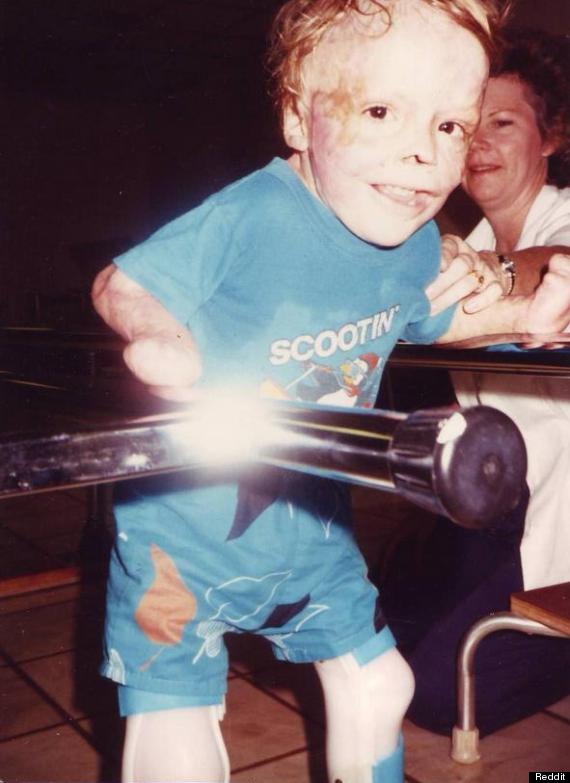

Burns extending into the underlying skin layer (dermis) are classed as partial thickness or second-degree these burns frequently form painful blisters. First-degree (superficial thickness, affecting the epidermis only) burns are typically benign, very painful, heal without scarring and do not require surgery. Alongside injuries to the skin, burns can be accompanied by smoke inhalation or other physical trauma to other organs.īurn depth is an important factor in assessing patient care needs and, in particular, surgical needs in general, the deeper the burn the more challenges there are to achieve good scar outcomes. A minor burn is usually a burn that encompasses 10%TBSA in elderly patients, >20%TBSA in adults and >30%TBSA in children. Importantly, burns are classified as either minor or major. Although superficial and superficial partial-thickness burns usually heal without surgical intervention, more severe burns need careful management, which includes topical antimicrobial dressings and/or surgery. Finally, a fourth-degree burn involves injury to deeper tissues, such as muscle or bone, is often blackened and frequently leads to loss of the burned part.

Worst burn victims full#
A full-thickness (third-degree) burn extends through the full dermis and is not typically painful owing to damage to the nerve endings, and requires protection from becoming infected and, unless very small, surgical management. Deep partial-thickness (second-degree) burns (formerly known as 2B burns) are less painful owing to partial destruction of the pain receptors, drier, require surgery and will scar.

Superficial partial-thickness (second-degree) burns (formerly known as 2A burns) are painful, weep, require dressing and wound care, and may scar, but do not require surgery. 1) the skin becomes red and the pain experienced is limited in duration. Burns that affect the uppermost layer of the skin (epidermis only) are classed as superficial (first-degree) burns (Fig. In addition to determining the cause of a burn injury it is imperative to classify the injury according to its severity - its depth and size.

For example, although deep thermal burns are operated on immediately, the same approach would be an error in frostbite, in which the therapy of choice is moist rewarming, possible thrombolysis and watchful waiting. The particular cause of a burn injury determines the treatment approach. These mechanisms lead not only to skin necrosis but also to deep tissue damage 3. Frostbite is caused by a number of mechanisms including direct cellular injury from crystallization of water in tissue and indirect injury from ischaemia and reperfusion. Thermal injury can also occur through cold. Electrical injuries are entirely different because they can cause deep tissue damage that is greater than the visible skin injury tissue damage in electrical injuries is correlated with the electric field strength (amperes and resistance of the tissue), although for ease of comprehension the voltage is often used to describe the circumstances of injury 2. Alkaline chemicals cause colliquative necrosis (whereby the tissue is transformed into a liquid, viscous mass), whereas acidic burn causes a coagulation necrosis (whereby the architecture of the dead tissue can be preserved). For example, a flame or hot grease can cause an immediate deep burn, whereas scald injuries (that is, from hot liquids or steam) tend to appear more superficial initially, due to rapid dilution of the source and energy. Although all burn injuries involve tissue destruction due to energy transfer, different causes can be associated with different physiological and pathophysiological responses. The injuries can be caused by friction, cold, heat, radiation, chemical or electric sources, but the majority of burn injuries are caused by heat from hot liquids, solids or fire 1.
Worst burn victims update#
The aim of this Primer is not only to give an overview and update about burn care, but also to raise awareness of the ongoing challenges and stigmata associated with burn injuries.īurn injuries are an under-appreciated trauma that can affect anyone, anytime and anywhere. Burn care providers are, therefore, faced with a plethora of challenges including acute and critical care management, long-term care and rehabilitation. Accordingly, patients with burn injury cannot be considered recovered when the wounds have healed instead, burn injury leads to long-term profound alterations that must be addressed to optimize quality of life. Of great importance is that the injury affects not only the physical health, but also the mental health and quality of life of the patient. Burn injuries, particularly severe burns, are accompanied by an immune and inflammatory response, metabolic changes and distributive shock that can be challenging to manage and can lead to multiple organ failure. Burn injuries are under-appreciated injuries that are associated with substantial morbidity and mortality.


 0 kommentar(er)
0 kommentar(er)
